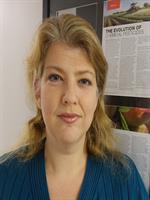 Transitioning Arsenic Speciation Analysis from the Inorganic to the Organic Laboratory: Novel Methods for Separation of Inorganic and Organic Arsenic Species by LCMS
Transitioning Arsenic Speciation Analysis from the Inorganic to the Organic Laboratory: Novel Methods for Separation of Inorganic and Organic Arsenic Species by LCMSMetals Analysis and Remediation
Oral Presentation
Prepared by P. Atkins, M. Totelbaum, A. Katz
SPEX CertiPrep, 203 Norcross Rd, Metuchen, NJ 08840, Metuchen, NJ, 08527, United States
Contact Information: [email protected]; 732-623-0470
ABSTRACT
The study of arsenic species is an important field to understand the potential health impacts of consumer products that contain arsenic. Organic arsenic species such as arsenobetaine, arsenocholine, monomethylarsonic acid (MMA) and dimethylarsinic acid (DMA) have a lower toxicity level than the inorganic arsenic species such as As III and As V. The ability to effectively separate these species have been developed using hyphenated inorganic analytical systems such as HPLC-ICP/MS which require a large investment in training, instrumentation and time. In this study the separation of arsenic species was performed using common organic laboratory instrumentation: LC/MS. A combination of several times of columns, run conditions and mobile phases were developed to maximize separation. Arsenic containing consumer products such as apple products, wine, cider and apple juice were tested to prove the effectiveness of arsenic species determination. Samples were tested by ICP-MS for total arsenic then compared to the analysis for the arsenic species by LC/MS. Some samples which may have been considered high in toxic arsenic were shown to have lower levels of inorganic arsenic and higher levels of organic arsenic species reducing toxicity which was not indicated by ICP/MS alone.

